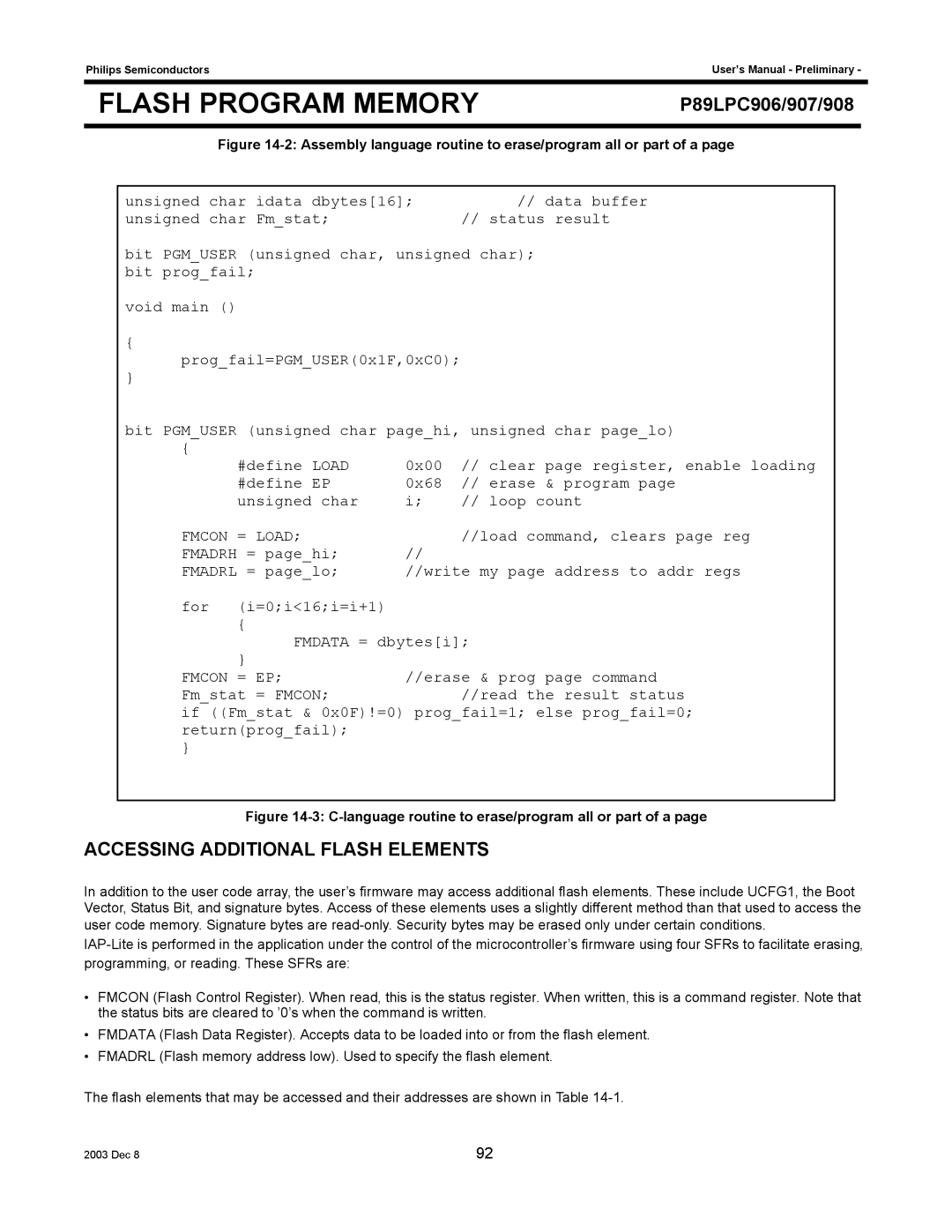
Philips Semiconductors |
| User’s Manual - Preliminary - | ||||
|
|
|
|
| ||
FLASH PROGRAM MEMORY | P89LPC906/907/908 |
| ||||
|
| Figure | ||||
|
|
|
|
|
| |
| unsigned | char idata dbytes[16]; |
| // data buffer | ||
| unsigned | char Fm_stat; | // status result | |||
bit PGM_USER (unsigned char, unsigned char); bit prog_fail;
void main ()
{
prog_fail=PGM_USER(0x1F,0xC0);
}
bit PGM_USER (unsigned char page_hi, unsigned char page_lo)
{
| #define LOAD | 0x00 | // clear page register, enable loading | ||
| #define EP | 0x68 | // erase & program page | ||
| unsigned char | i; | // loop count | ||
FMCON | = | LOAD; | // | //load command, clears page reg | |
FMADRH = page_hi; |
| ||||
FMADRL = page_lo; | //write my page address to addr regs | ||||
for | (i=0;i<16;i=i+1) |
|
| ||
| { | FMDATA = dbytes[i]; | |||
| } | ||||
FMCON | EP; | //erase & prog page command | |||
= | |||||
Fm_stat | = FMCON; |
| //read the result status | ||
if ((Fm_stat & 0x0F)!=0) prog_fail=1; else prog_fail=0; return(prog_fail);
}
Figure 14-3: C-language routine to erase/program all or part of a page
ACCESSING ADDITIONAL FLASH ELEMENTS
In addition to the user code array, the user’s firmware may access additional flash elements. These include UCFG1, the Boot Vector, Status Bit, and signature bytes. Access of these elements uses a slightly different method than that used to access the user code memory. Signature bytes are
•FMCON (Flash Control Register). When read, this is the status register. When written, this is a command register. Note that the status bits are cleared to ’0’s when the command is written.
•FMDATA (Flash Data Register). Accepts data to be loaded into or from the flash element.
•FMADRL (Flash memory address low). Used to specify the flash element.
The flash elements that may be accessed and their addresses are shown in Table
2003 Dec 8 | 92 |
